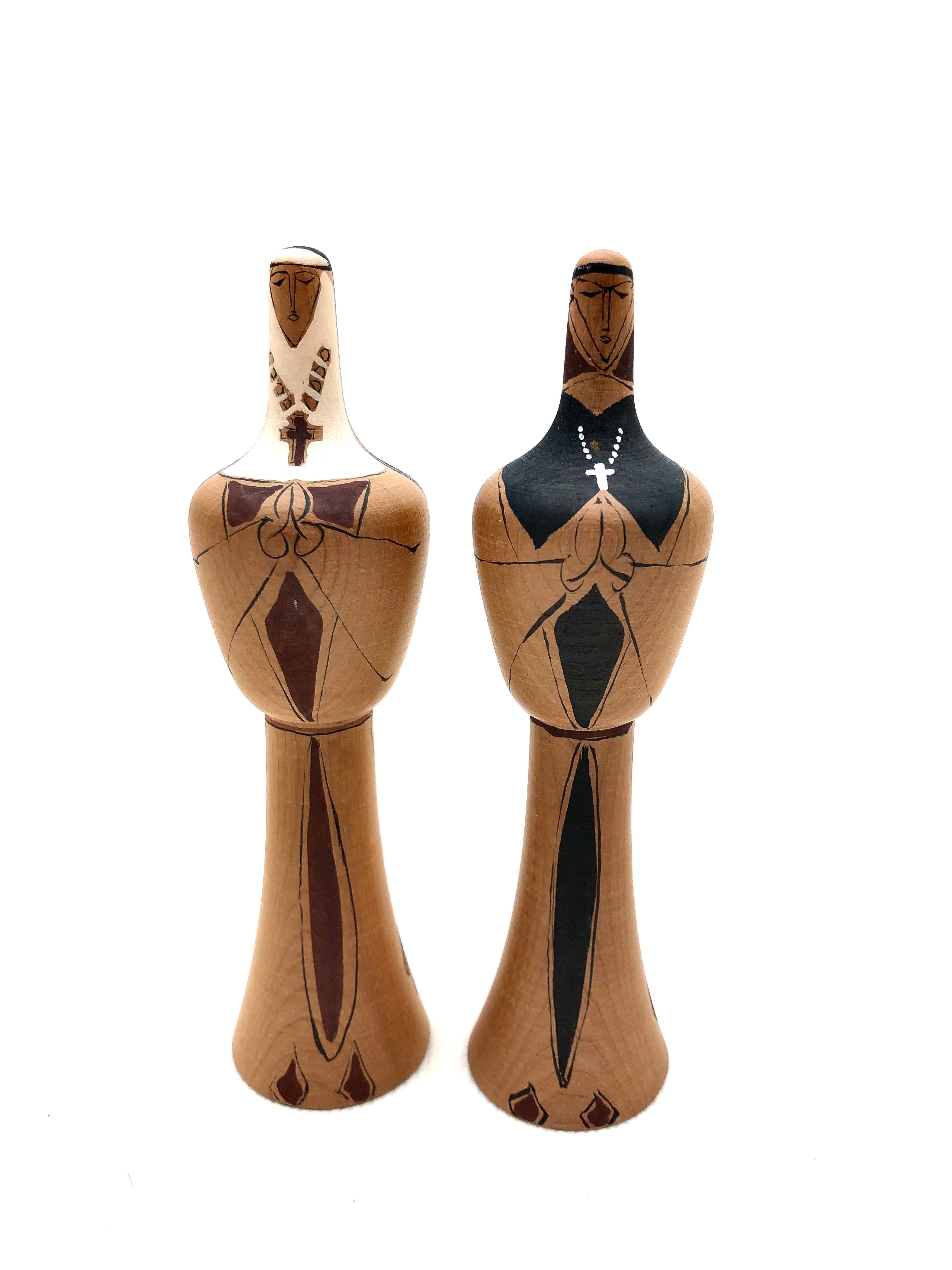
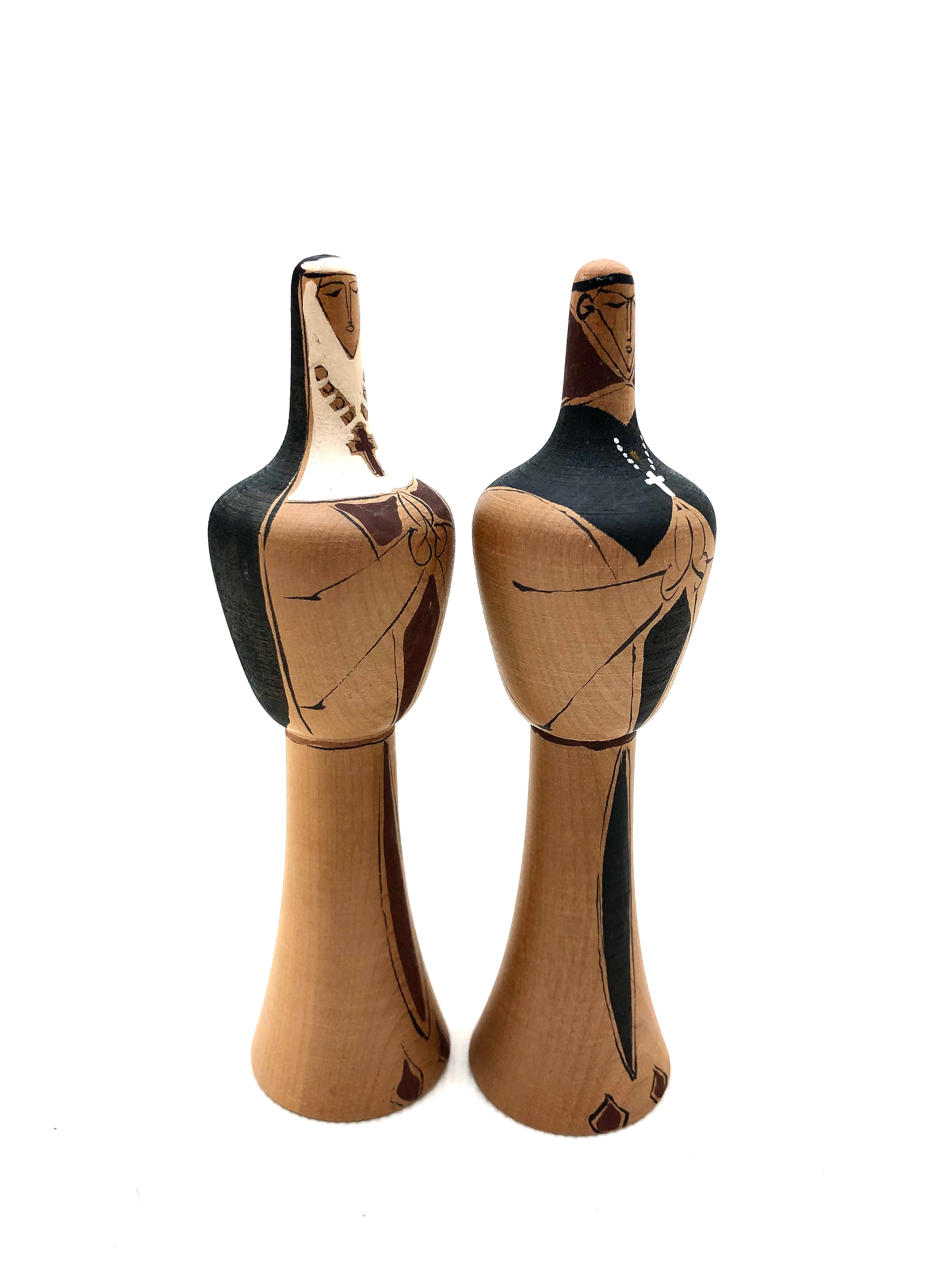
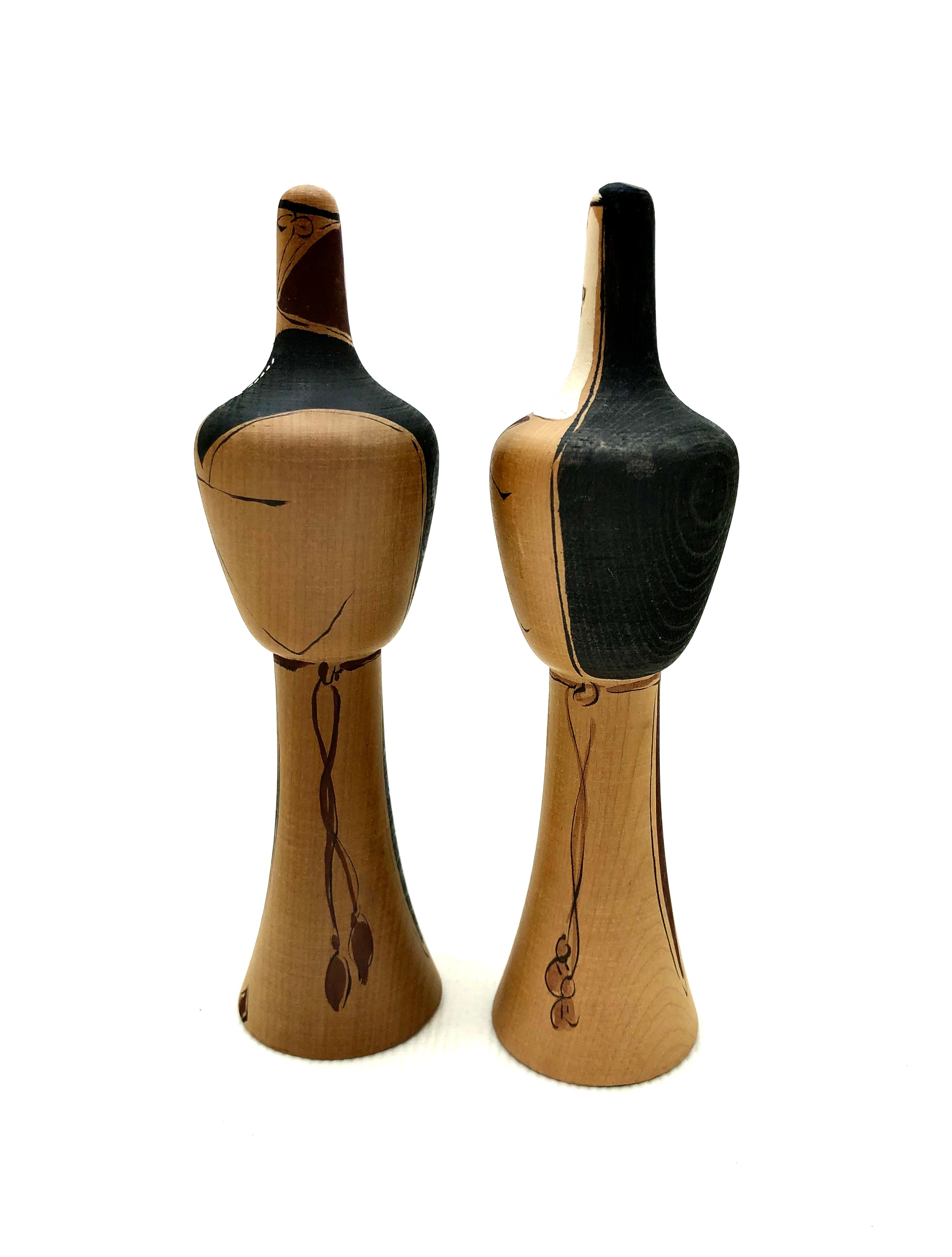
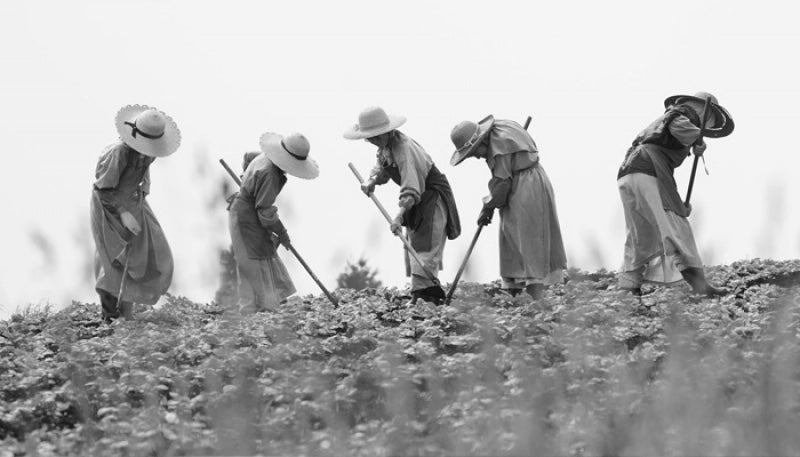
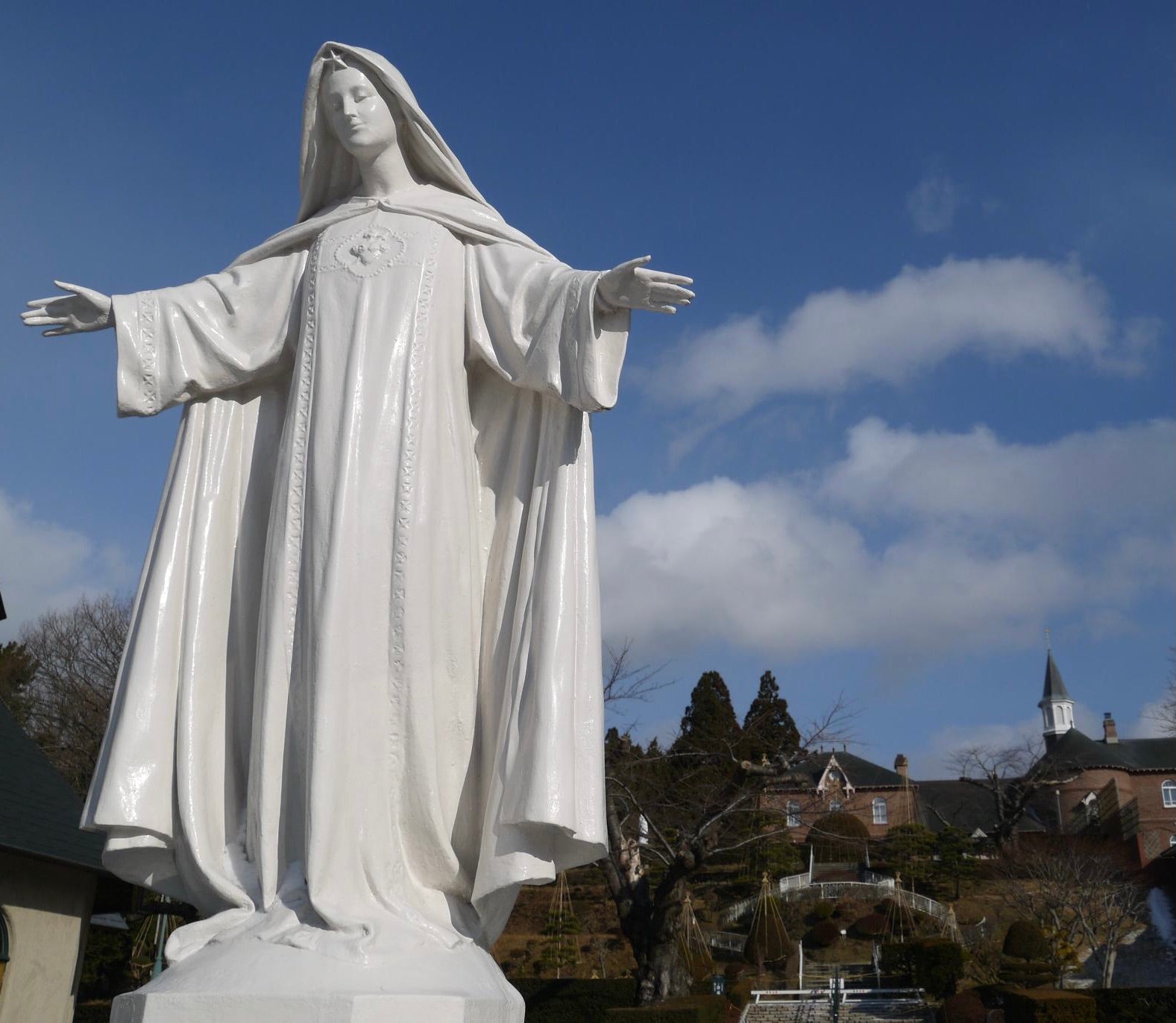
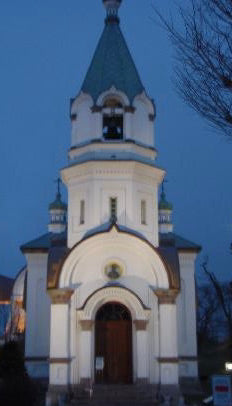

Vintage Japanese Lathe-Turned Kokeshi of Trappist Nuns | Monastery & Convent Hakodate, Hokkaido Carving by Nemoto Mogura
Dimensions: 5-3/4”h
These large figures represent Trappist Nuns of the different hierarchy of the Cistercians Order, of the Benedictine Monastic lifestyle. The Order itself dates back several hundred years, originating in Citeaux, the Burgundy region of France at the end of the 11th/ century, (1098). There are about 70 nuns, known as a superfluity, living in this facility which has gone through major renovation and expansion since its inception.
These simple lathe-turned figures of Nuns are hand-painted and detailed shown in full garb consisting of a tunic, cowl, and veil representing the religious habit of this order which shows hierarchy between the Nun population, (white veils indicate they are in training to become a nun and have not taken their vows of chastity. The black veil indicates a nun who has already taken her solemn vows and is full-fledged). The nun’s veil is typically representative of the community where they live, which here is that of the Trappist and a system that relies on a standardized combination of symbolic elements. Figures include rosaries or religious metals and a collection of religious articles and any sartorial elements, including a cord over a belt, to reflect their order’s devotion to poverty, obedience, and enclosure. The interesting element is the shape of the heads along with pious details and expressions. The carving was executed by the Brothers of the Monastery, but no specific craftsperson is indicated.
Vintage Condition: Excellent, fully detailed, “as is”, and retains the original craft/workmanship. No discoloration, chipping/cracking, surface wear, or structural damage is noted.
NOTE: With the assistance of the French abbey at Bricquebec in Normandy, a Convent was founded in Kamiiso, near Hakodate, Hokkaido. Cistercian monasteries followed soon after spreading from Hokkaido south to Okinawa. The orders Common Observance focused on hard labor and prayer. However, over the centuries, like here in Japan, the focus shifted to academic educational pursuits.
Convent: Religious sisters/nuns live in convents, which offer more open access to the secular world. Residents typically live and pray in the convent but work outside in schools, hospitals, and act as administrators and oversee the everyday duties of the household including growing food, preparation, and serving their sisters in residence.
Monastery: A monastery is the male version of a convent and always robed in white tunics. A monastery is a place where Benedictine monks and brothers reside and complement the vocation of the religious sisters/nuns. Monks are divided into two types, eremitic, who are solitary hermits, and cenobitic, who live together in a community. The male population, work, and pray together, working inside and outside their respective communities and also overseeing the everyday duties of the community.
